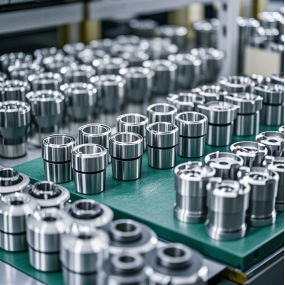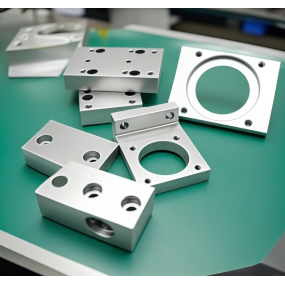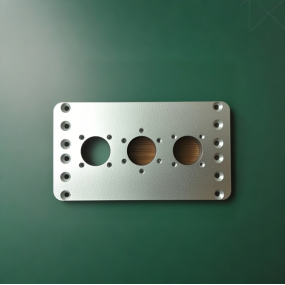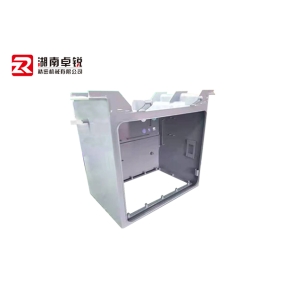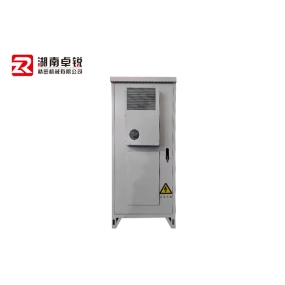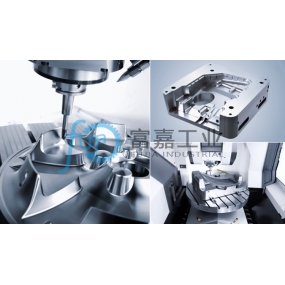In the process of precision Sheet Metal Processing, removing surface impurities is an important step to ensure the quality and performance of products. The following are some common methods to remove surface impurities: 1. Principle of Mechanical Treatment: Using mechanical abrasives such as grinding wheels, wire brushes, and polishing cloths to grind, polish, and draw the surface to physically remove impurities such as oxide scale, oil stains, and burrs on the surface. Advantages: Simple operation, low cost, and can effectively improve the surface finish and flatness. Disadvantages: Relatively low efficiency, limited removal effect for deep impurities, and easy to damage the surface. 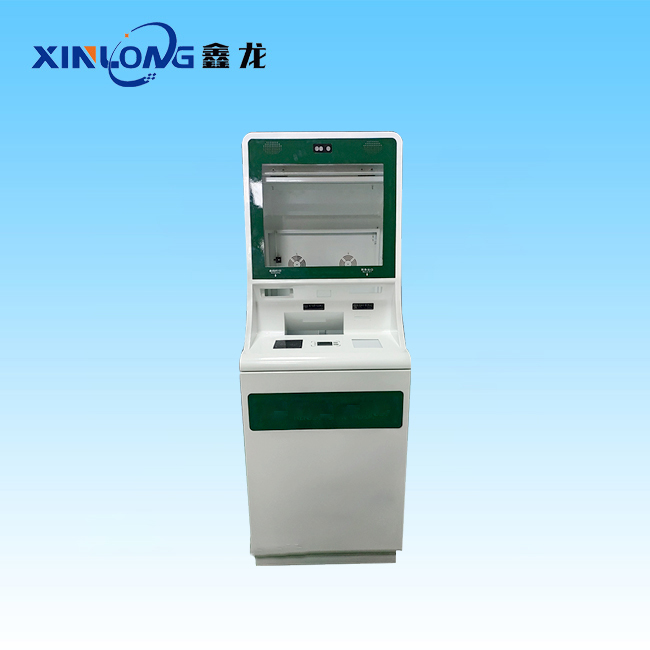 2. Principle of Chemical Treatment: Using acid-base solutions to corrode or dissolve the surface, thereby removing impurities such as oxide scale and oil stains on the surface. Advantages: High efficiency, can deeply remove deep impurities, while improving the cleanliness and activity of the surface. Disadvantages: The operation is dangerous, the concentration of the solution and the treatment time need to be strictly controlled to prevent excessive corrosion or damage to the substrate. At the same time, it is also necessary to pay attention to environmental protection and avoid the pollution of the environment by chemical waste liquid. 3. Principle of electrochemical treatment: The electrolytic reaction is carried out on the surface using electrolyte and current, and the impurities are removed or a protective film is generated by electrochemical action. Advantages: The effect is good, it can form a uniform and dense film layer, and improve the corrosion resistance and decoration of the surface. Disadvantages: The equipment is complicated, the cost is high, it needs professional operation, and the environmental and safety requirements are high. 4. Heat Treatment Principle: Using high temperature or flame to heat or redox the surface to remove or generate a protective film. Advantages: It can change the physical properties of the material, such as improving hardness and wear resistance. Disadvantages: It is difficult to operate, and the temperature and time need to be precisely controlled to prevent deformation or cracking. 5. Other Methods Sandblasting Treatment: Using high-speed sprayed sand grains to impact the surface to remove impurities such as oxide scale, rust layer and oil stains. Sandblasting treatment can improve the roughness of the surface and enhance the adhesion of the coating. Shot Blasting Treatment: Similar to sandblasting, but shot blasting uses hard particles such as steel shot or aluminum shot, which is suitable for the treatment of large areas and thick materials. Ultrasonic cleaning: Using the cavitation effect and direct flow effect generated by ultrasonic waves in the cleaning liquid to clean the surface can effectively remove tiny impurities such as oil and dust. Precautions When choosing a method to remove surface impurities, comprehensive consideration needs to be made according to factors such as the type of sheet metal material, surface condition and subsequent processing requirements. During the treatment process, it is necessary to strictly abide by the operating procedures and safety specifications to ensure the safety of personnel and equipment. After treatment, sufficient cleaning and drying should be carried out to prevent the residue from affecting the subsequent processing.
2. Principle of Chemical Treatment: Using acid-base solutions to corrode or dissolve the surface, thereby removing impurities such as oxide scale and oil stains on the surface. Advantages: High efficiency, can deeply remove deep impurities, while improving the cleanliness and activity of the surface. Disadvantages: The operation is dangerous, the concentration of the solution and the treatment time need to be strictly controlled to prevent excessive corrosion or damage to the substrate. At the same time, it is also necessary to pay attention to environmental protection and avoid the pollution of the environment by chemical waste liquid. 3. Principle of electrochemical treatment: The electrolytic reaction is carried out on the surface using electrolyte and current, and the impurities are removed or a protective film is generated by electrochemical action. Advantages: The effect is good, it can form a uniform and dense film layer, and improve the corrosion resistance and decoration of the surface. Disadvantages: The equipment is complicated, the cost is high, it needs professional operation, and the environmental and safety requirements are high. 4. Heat Treatment Principle: Using high temperature or flame to heat or redox the surface to remove or generate a protective film. Advantages: It can change the physical properties of the material, such as improving hardness and wear resistance. Disadvantages: It is difficult to operate, and the temperature and time need to be precisely controlled to prevent deformation or cracking. 5. Other Methods Sandblasting Treatment: Using high-speed sprayed sand grains to impact the surface to remove impurities such as oxide scale, rust layer and oil stains. Sandblasting treatment can improve the roughness of the surface and enhance the adhesion of the coating. Shot Blasting Treatment: Similar to sandblasting, but shot blasting uses hard particles such as steel shot or aluminum shot, which is suitable for the treatment of large areas and thick materials. Ultrasonic cleaning: Using the cavitation effect and direct flow effect generated by ultrasonic waves in the cleaning liquid to clean the surface can effectively remove tiny impurities such as oil and dust. Precautions When choosing a method to remove surface impurities, comprehensive consideration needs to be made according to factors such as the type of sheet metal material, surface condition and subsequent processing requirements. During the treatment process, it is necessary to strictly abide by the operating procedures and safety specifications to ensure the safety of personnel and equipment. After treatment, sufficient cleaning and drying should be carried out to prevent the residue from affecting the subsequent processing.
Hello! Welcome to EMAR's website!
 English
English » »
» »
 Spanish
Spanish Arabic
Arabic French
French Portuguese
Portuguese Belarusian
Belarusian Japanese
Japanese Russian
Russian Malay
Malay Icelandic
Icelandic Bulgarian
Bulgarian Azerbaijani
Azerbaijani Estonian
Estonian Irish
Irish Polish
Polish Persian
Persian Boolean
Boolean Danish
Danish German
German Filipino
Filipino Finnish
Finnish Korean
Korean Dutch
Dutch Galician
Galician Catalan
Catalan Czech
Czech Croatian
Croatian Latin
Latin Latvian
Latvian Romanian
Romanian Maltese
Maltese Macedonian
Macedonian Norwegian
Norwegian Swedish
Swedish Serbian
Serbian Slovak
Slovak Slovenian
Slovenian Swahili
Swahili Thai
Thai Turkish
Turkish Welsh
Welsh Urdu
Urdu Ukrainian
Ukrainian Greek
Greek Hungarian
Hungarian Italian
Italian Yiddish
Yiddish Indonesian
Indonesian Vietnamese
Vietnamese Haitian Creole
Haitian Creole Spanish Basque
Spanish Basque


